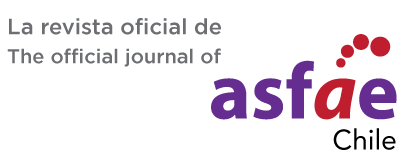Imitation Among Pension Funds in Chile
Keywords:
Diversification, return, risk, differentiationAbstract
Pension funds must comply with a restriction of minimum return which is based on a benchmark defined from the average diversification associated with each of the five types of funds that each firm in the industry manages and that the workers can choose according to their level of risk aversion. Failure to comply with this restriction obliges the administrator of each fund, to cover the deficit with its own resources.
This research analyzes the national market share transactions pre and post crisis subprime to the extent to which pension fund administrators adopt an active or an imitative investment strategy. The focus of this analysis was aimed at finding empirical evidence regarding the type of strategy that pension fund administrators adopted in that time frame. Opting for an active investment strategy means appropriating the best portfolio diversification detected, whereas an imitative strategy advices not to deviate significantly from the average industry diversification and consequently do not take any risk to meet the constraint of minimum return.
This paper detects some empirical evidence that could be interpreted as systematic imitation among pension funds, understanding as systematic imitation, that this behavior is repeated in at least four consecutive months











